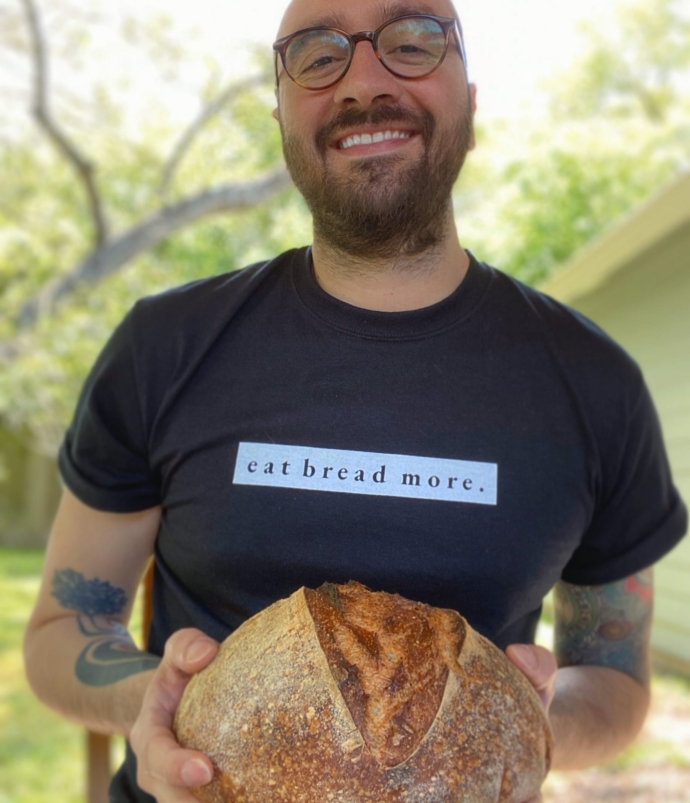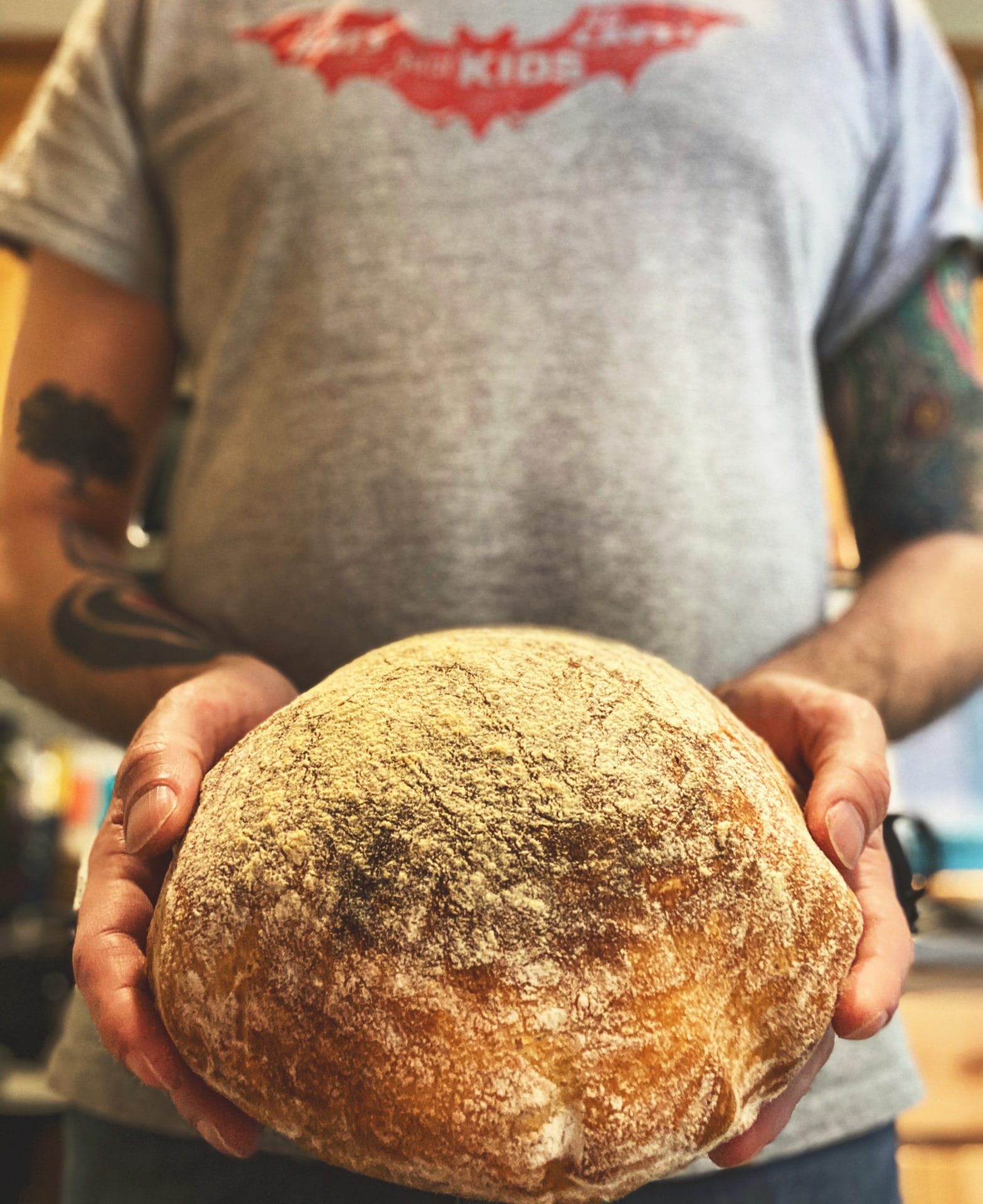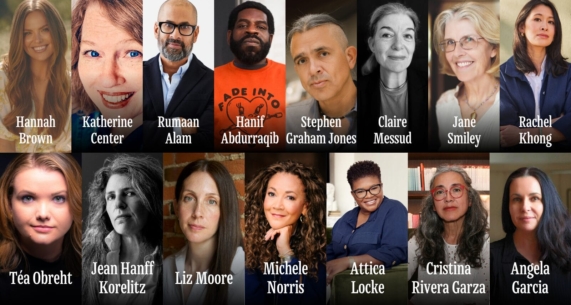guest post written by Ali Haider, Executive Director of Austin Bat Cave
I have a baking problem. With all of this time at home, I should be writing, but instead I am baking. Every few days, I order sacks of bread flour. My office, outfitted with a small but mighty space heater has been converted to a warm proofing room. I’ve conformed my work schedule around the tending of my sourdough starter, and I have a baking schedule that I keep to more religiously than I’ve ever kept to any prayers. With my morning coffee in one hand, I feed my starter and then walk the dog. My starter’s name is Scheherazade. The same name I imagine giving my daughter except the only child I have is this starter. A dozen or so timers set throughout the day remind me that it’s time to knead or stretch or fold my dough.
Care and feeding.
It’s gotten so bad that on days that I don’t bake, Siri chimes in and asks if I want to set a timer. Siri is on this schedule with me and is checking in. She sounds worried. She pleads with me. Bake, Ali.
This all started a few months ago. A few days into the New Year, my brother visited and brought with him a loaf of bread that he’d baked. Knowing how much I love cooking, he urged me to give bread a go. To make things easier, he recommended a popular New York Times recipe that used a method developed by Sullivan Street bakery owner Jim Sullivan that involved no kneading. Just mixing a few simple ingredients that most of us have on hand: flour, salt, water, and a dash of yeast.
I love complicated recipes with lots of ingredients and very particular steps that use up a lot of bowls and involve whisking this and tempering that and layering all the ding dang things to combine together in a culinary feat of deliciousness. I love mastering technique. But anything involving dough has always eluded me. Even banana bread comes out overcooked. Dry. Burnt. Dense. Bread was too complicated. I always wound up with messy countertops furred in flour and more dough stuck to my hands than what I ended up cooking. No thanks.
The secret with this recipe, however, was mixing the ingredients into a shaggy dough and letting it sit overnight. Time, not talent, was the trick. Every step of the way, I thought I’d messed something up. This doesn’t look right, I kept saying. Nevertheless, I popped it into the oven and prayed. Less than an hour later, the bread was cooling on a wire rack and the sound of crust crackling was musical. You know that class they take in Harry Potter where they turn one thing into another? Transfiguration? The cat professor teaches it. Meaning the woman who can magic herself into a cat. That’s what this felt like. A soupy mix of flour transformed as if by magic into a delicious, nourishing loaf of bread.
One of my favorite things about cooking is imagining how the heck somebody identified this process with these ingredients could somehow be delicious. Cooking can feel like time traveling. What did that first person see? What did they taste? How did they feel? Somebody looked at stalks of wheat and figured out not only how to mill the berries but also that it could be mixed with water into this paste that would react with fire and become something worth eating. And not simply eating for fuel. But eating to savor. Bread is meant to be shared. It is communal and sacred. A gift that sustains us physically, mentally, spiritually. It is our divinity.
I don’t know exactly what it was about bread that dug its hooks into me, but as soon as I baked my first loaf, I wanted to do it again. And again and again and again. I baked a loaf of bread every day for nearly two months. The last time I’d maintained something that consistently was when I got sober. The two felt linked.
Baking bread is mostly babysitting. You check in now and again, but the most used ingredient is time. Bakers will often tell you that if you’re having trouble with your dough, let it rest. Give it another thirty minutes, and when you come back to it, it’ll be easier. One of the most crucial steps I’ve found in baking is autolyse, which is a very fancy science-y sounding word that essentially means just mixing flour and water and letting them sit. The flour becomes fully hydrated and simply by waiting, becomes more extensible—stretchy–and easier to handle.
I love this about baking. Bread demands of me patience. We do not set the timeline. With bread, it is enough just to be patient, and gluten will form. The recipe I’m currently using takes about 26 hours from step one to step bread.
Just a few weeks before the outbreak of COVID-19 in Washington state, I made a sourdough starter. My first sourdough loaf was a complete disaster. Disappointed and grumbling, I went back to the no-knead method, but the promise of tangy sourdough with a creamy crumb kept calling me back. I tried again. Around this same time, I noticed that baking bread was a good way of getting my body and mind into a meditative and more peaceful state. On days that I baked, I noticed that I was kinder, softer, more appreciative of those around me. Because I was baking so much bread and not wanting it to go to waste, I began giving loaves away to friends, family, people following me on Twitter. Baking was meditative. Baking for others was restorative.
For the past few years, I was lost and aimless. Sobriety gave me some direction. Baking gave me a sense of purpose. I have always enjoyed cooking for others. Coming together with friends and loved ones over a meal you’ve prepared is a balm. Knowing the people in your life well enough that you can pick and choose ingredients and design a meal that not only sates but also pleases them gives me the kind of joy that sits deep in my belly. I feel content and peaceful.
I was bemoaning (on Twitter, of course) that with all this quaran-time on my hands, I was planning elaborate, delicious dinners but hadn’t touched a goddamn word of my novel, and a dear one replied, “Cooking is writing, walking is writing, gazing out the window is writing.” And she is exactly right. I am pouring myself into a creative endeavor. The thing I fell in love with about writing was the craft and learning how to build something—a story, a poem, characters—that made readers feel something. Bread is not so different. The same things that I love about writing are what I love about baking bread. When you execute it well and deliver it still warm into somebody’s hands, they get to sit with it at the kitchen table or at their desk and eat it with fresh butter and a sprinkle of salt, and if I really did my job, they’ll be moved and sustained. I will have done my part to give them a small comfort. I can’t think of anything more deserving of my time than that.
Syed Ali Haider is a writer and the Executive Director of Austin Bat Cave. His work has appeared in Glimmer Train, Juked, Cimarron Review, and Aster(ix). You can read his bread blog at alibakesbread.com, and if you live near Austin and want a free loaf of bread, hit him up on Twitter at @SyedARHaider.






